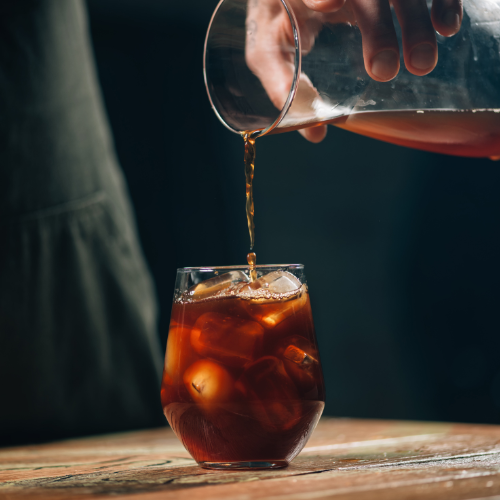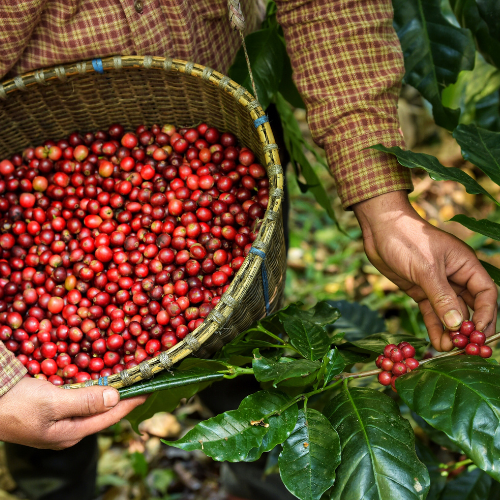How to make cold brew coffee
Introduction
Decide what beans you want to use.
To start, you’ll need to decide what beans to use. Coffee beans are the seeds of the coffee plant, which grow in tropical and subtropical regions. The longer a bean is roasted and the darker it becomes, the more acidic its taste will be (and vice versa). Beans can be graded based on size and color; lighter roasts are more flavorful than dark ones.
Grind the beans at a coarse setting.
If you’re making regular coffee, the coarse setting is best. If it’s for French press or espresso, use the fine setting. Cold brew becomes bitter if it's too finely ground, so don't go crazy on this one. The same applies for Turkish coffee and percolator coffee: use coarse grinds for those as well!
If you're only drinking drip coffee at home, try using a medium grind to get a more balanced flavor from your beans.
Combine your ground beans and water in a container.
Next, combine the beans and water in a container. The container should be large enough that it holds the water and beans without spilling but not so large that all of the beans get mixed up together, which would make it difficult to separate them from the grounds later on (and also just makes for more cleanup). Use a small bowl if you're doing single cups of cold brew at a time; use larger bowls if you want to prepare more than one batch at once.
The same goes for shape: pick something that will fit on top of your fridge or countertop without taking up too much space—you don't want this too tall! But you also don't want it too wide because then when you add half-and-half or milk to make your coffee drink smoothie, there's no room left over for ice cubes or frozen yogurt chunks.
It may seem like an obvious thing but keep in mind that most containers aren't exactly perfect cylinders; they might have weird ripples here and there that could affect how well everything fits together inside once everything's blended together into one homogenous mixture (if only life were as simple as making cold brew!).
Let the coffee sit for about 12 hours, then strain it.
Once it's done brewing, you'll want to strain the coffee immediately. The easiest way to do this is with a fine-mesh sieve and cheesecloth. If you don't have any cheesecloth handy (you can use it in other recipes, too), use a clean kitchen towel instead; just make sure you get all of the grounds out!
If you're feeling extra fancy, try using an old tea towel or linen napkin—this will give your cold brew an even more refined look when strained into glasses. Don't worry if some sediment gets into your cup as well; just drink up! Cold brew is meant for savoring every last drop of flavor from its ingredients.
After you've strained out the grounds, cold brew coffee will last for about one week in the fridge.
Now that you’ve strained out the grounds, it's time to package your cold brew coffee. Store in a sealed container in the refrigerator. Your cold brew should last for about one week in its original packaging before going bad and picking up other flavors from other foods in the fridge. Make sure it's sealed tightly—otherwise, oxygen will get into your jar and make the whole batch go bad much more quickly! Also keep it away from light and heat so that it doesn't lose its freshness before you're ready to drink it all up.
Make sure you leave your coffee to sit long enough, but don't let it sit for more than 24 hours.
If you've been following the directions in this guide, you've already made one batch of cold brew coffee. You may have noticed that your coffee was much lighter in color than the coffee you usually drink. That's because the process of making cold brew coffee involves steeping the beans in water instead of brewing them with heat.
Because there's no heat involved, it takes longer to extract all of the flavors out of each bean—24 hours is standard for most recipes. But just like any other food or beverage recipe, there are plenty of ways to tweak your own recipe by changing variables like grind size and steep time—which means there's room for experimentation!
You can also use different kinds of beans if you want to experiment with different flavors or aromas (and don't forget about decaf). If you're looking for something more interesting than black coffee on its own, try adding some whole milk or half-and-half before straining it out; these ingredients will give your drink more body without changing its flavor too much!



Leave a comment
All comments are moderated before being published.
This site is protected by hCaptcha and the hCaptcha Privacy Policy and Terms of Service apply.